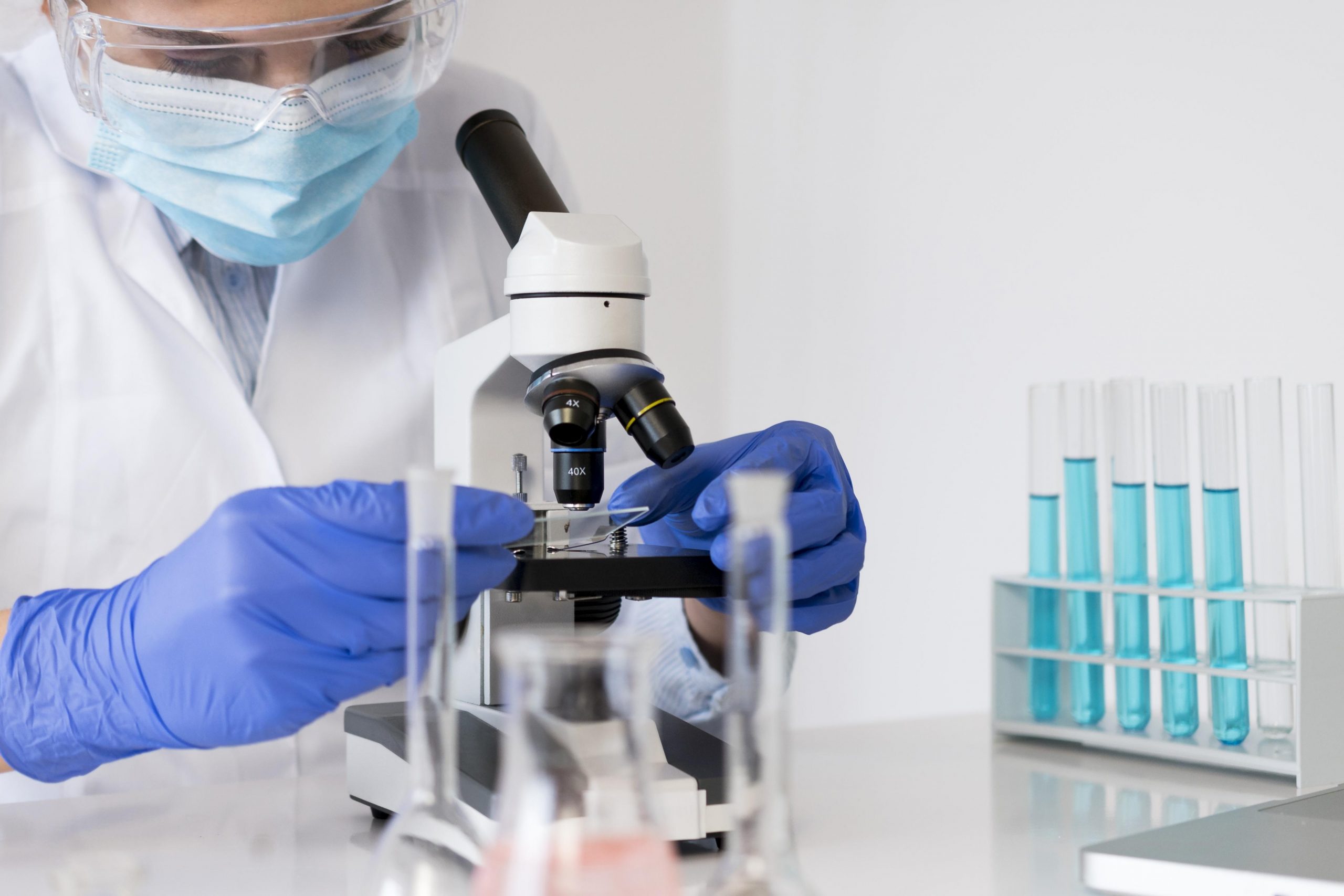

According to a new study published in Nature Communications, researchers from Dana-Farber Cancer Institute, Brigham and Women’s Hospital, and Medical University of Lodz discovered a mechanism to detect elevated cancer risks associated with BRCA1 and BRCA2 mutations without genetic sequencing.
The assessment isn’t based on the presence of BRCA1/2 gene mutations. Rather, it’s based on functional changes that occur when the pathway those and other genes regulate is not working properly. “For the first time, we have found a signal in the blood to detect pathology associated with increased cancer risk,” says senior author and Dana-Farber researcher Dipanjan Chowdhury, Ph.D.
This novel method of risk detection could serve as the foundation for a more accessible, inexpensive, and perhaps more thorough method of diagnosing a hereditary risk of breast or ovarian cancer.
The BRCA1 and BRCA2 genes are part of a larger DNA repair mechanism. Certain abnormalities in these genes weaken the repair mechanism, increasing the chance of developing breast, ovarian, pancreatic, or prostate cancer. In the United States, patients with a family history of certain cancers may benefit from genetic testing for mutations in these genes. People who test positive for cancer have the choice of pursuing additional screening or surgery to reduce or eliminate their chance of developing the disease.
However, barely 10% of the estimated 1 million BRCA1/2 mutation carriers in the United States are aware of their status. Testing for BRCA mutations is not even accessible in India. A more accessible method of detection could allow many more people to understand if they have a hereditary increased cancer risks.
“What if we had an accessible and affordable test for inherited cancer risks that you can get done as an annual physical, the same way we test for diabetes or heart disease risk?” says Chowdhury. “These study results suggest that such a test is in the realm of possibility.”
Chowdhury discovered a heightened risk signal in the blood in the presence of a specific constellation of microRNAs. MicroRNAs are hairpin-shaped, non-coding RNA molecules that circulate in our blood. They’re becoming more popular as illness biomarkers.
The presence of one specific constellation of microRNAs indicates an active breakdown of that DNA repair process, similar to the distinct knocking sound made by a car engine when one of its components begins to fail. The absence of that constellation indicates a functioning DNA repair process—quiet like a purring engine.
The scientists evaluated blood samples from 653 persons from six biorepositories, four in the United States, one in Poland, and one in India, for the proof-of-concept study. About half of the samples were proven to have BRCA mutations, while the other half were not.
The researchers employed next-generation sequencing to identify the microRNAs in each sample and developed a data set that included the microRNAs as well as the BRCA mutation status for each sample. Chowdhury’s colleagues at the Medical University of Lodz employed machine learning to establish a signature—that distinct constellation of microRNAs—found only in BRCA-positive data.
In 94% of cases, the model they developed properly recognized the existence of BRCA mutations, providing significant evidence that the signal offers a new technique to predict a higher risk of cancer.
This proof-of-concept study carefully assesses the signal’s validity but does not serve as the foundation for a clinical test that might be utilized in an annual evaluation. However, a low-cost clinical test is achievable.
To detect the microRNA signature, PCR tests—the same method used to detect COVID-19 infections—can be utilized instead of next generation sequencing, making it more affordable and accessible. Furthermore, Chowdhury claims that as the model used to detect the microRNA constellation is trained on larger and larger datasets, its accuracy will improve.
Chowdhury hypothesizes that the test may be a more thorough indicator of heightened risk than genetic sequencing of the BRCA1 and BRCA2 genes because it captures symptoms of pathology in action—regardless of which gene mutations cause it. Genetic testing now detects only known defects in a few recognized genes in the genome that potentially disrupt the DNA repair process.
“We are constantly discovering new genes and mutations that could impact this pathway, so it is hard for genetic testing to keep up,” says Chowdhury. “A test that is independent of that, that shows you have a problem in the pathway, could more broadly identify people at risk.”
Chowdhury is now conducting a clinical research to evaluate the viability of using a similar test to screen for early-stage ovarian cancer. The study was driven by a prior retrospective study that found a specific constellation of microRNAs when cancer first develops.
more recommended stories
 E-Cigarette Use and Heart Attack Risk in Former Smokers
E-Cigarette Use and Heart Attack Risk in Former SmokersKey Takeaways for Clinicians and Nurses.
 36-Week Pre-eclampsia Screening May Reduce Term Risk
36-Week Pre-eclampsia Screening May Reduce Term RiskA New Preventive Strategy for Term.
 Cardiovascular Risk and Sudden Cardiac Death in Diabetes
Cardiovascular Risk and Sudden Cardiac Death in DiabetesRising Sudden Cardiac Death (SCD) Risk.
 Poor Kidney Function and Alzheimer’s Biomarkers Explained
Poor Kidney Function and Alzheimer’s Biomarkers ExplainedPoor kidney function may influence levels.
 Walking Speed Before Hip Replacement Predicts Recovery
Walking Speed Before Hip Replacement Predicts RecoveryNew Evidence Points to a Simple,.
 Neuroblastoma Drug Combo Extends Survival in Models
Neuroblastoma Drug Combo Extends Survival in ModelsA Promising Shift in High-Risk Neuroblastoma.
 How Soybean Oil Impacts Weight Gain and Metabolism
How Soybean Oil Impacts Weight Gain and MetabolismWhy Soybean Oil May Affect Metabolism.
 Coffee and Cognitive Function: Evidence Review
Coffee and Cognitive Function: Evidence ReviewA new narrative review in Cureus.
 Colorectal Cancer Screening Rates Low in Adults 45–49
Colorectal Cancer Screening Rates Low in Adults 45–49Recent UCLA research reveals that colorectal.
 Gut Immune Cells and Long-Lasting Antiviral Protection.
Gut Immune Cells and Long-Lasting Antiviral Protection.Breakthrough Findings on How Gut Immune.

Leave a Comment